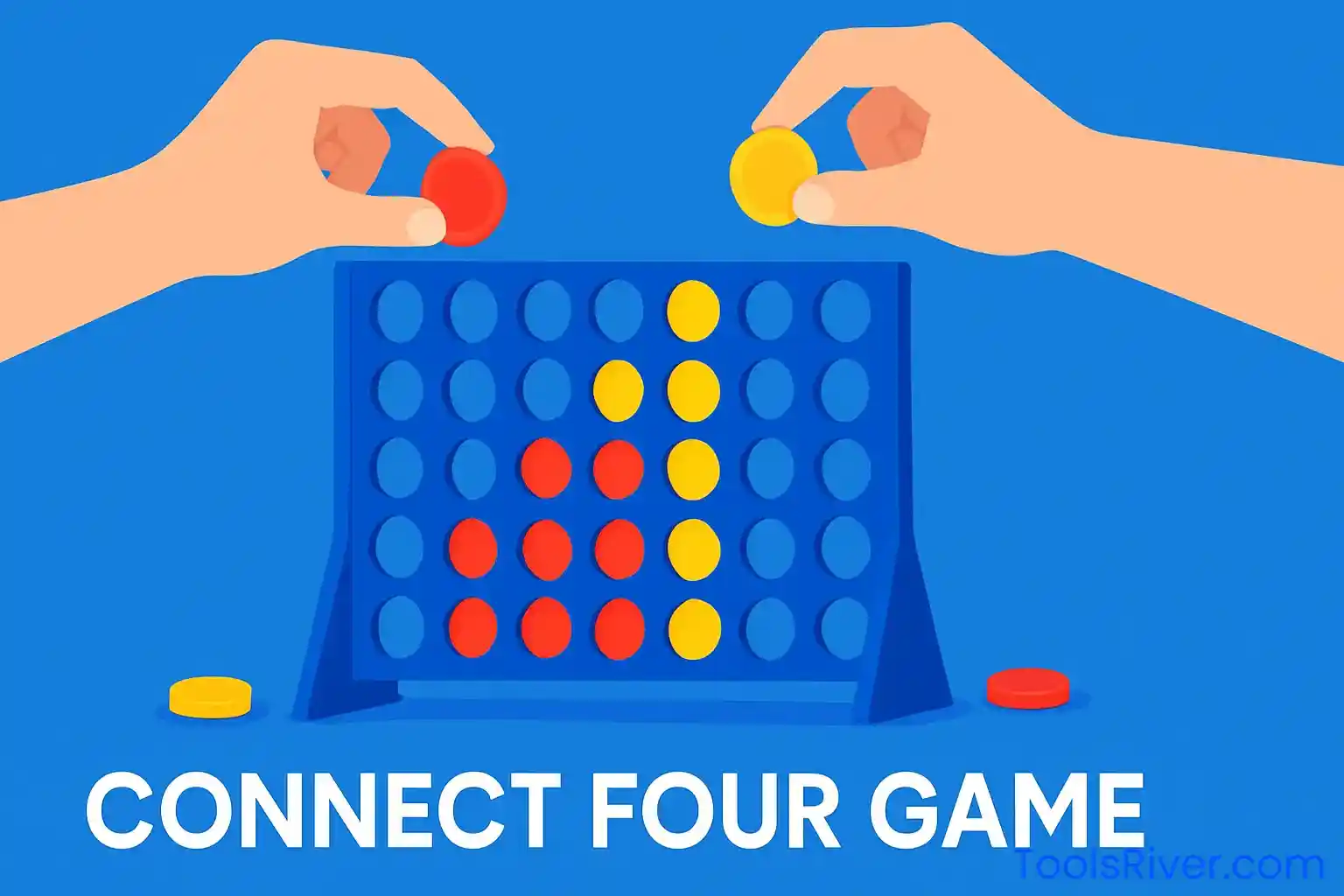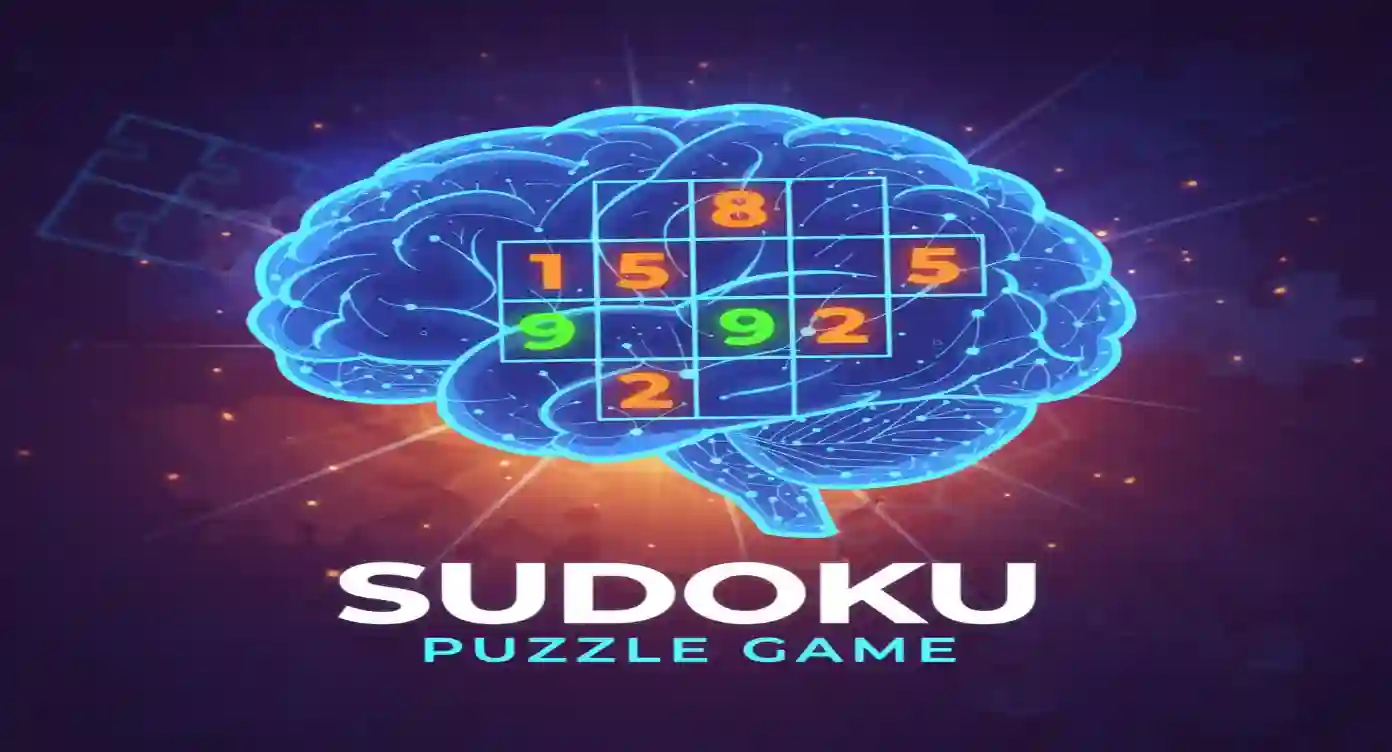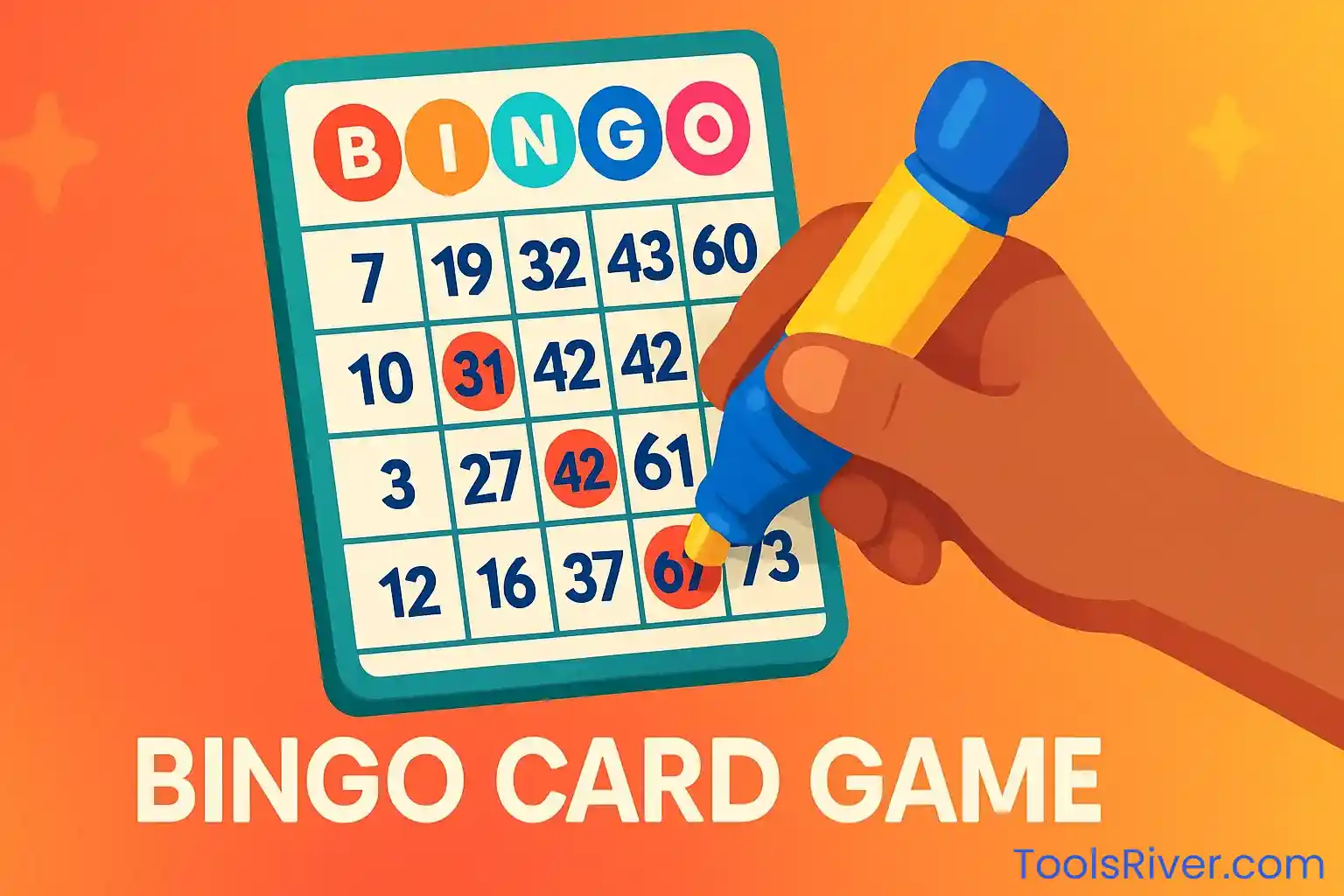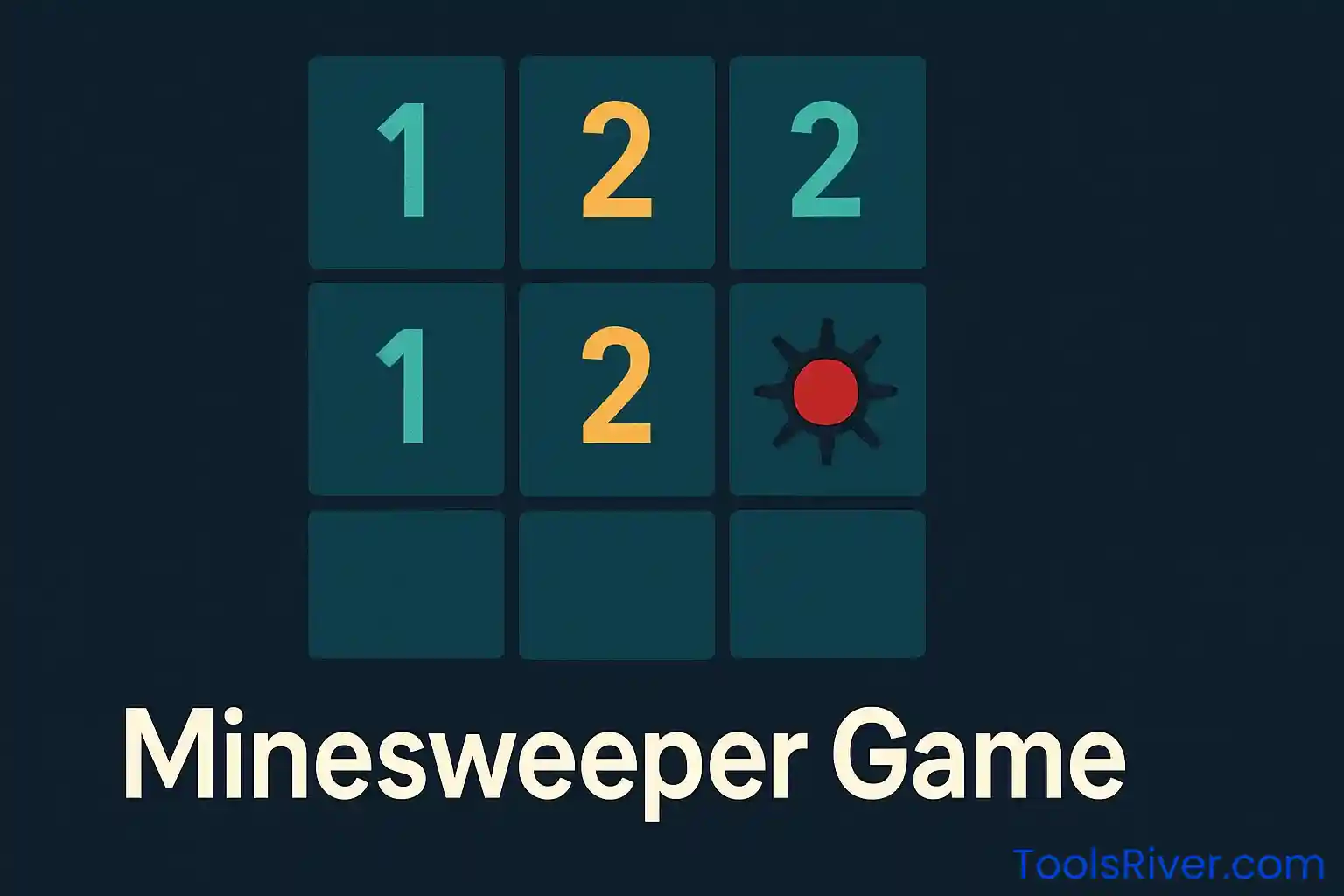Sudoku Puzzle Game
Challenge your mind with our interactive Sudoku puzzle game. Choose your difficulty level and enjoy hours of brain-teasing fun!
Play Sudoku Online
Fill in the grid so that every row, column, and 3×3 box contains the numbers 1 through 9. Click on a cell and then select a number to place it.
Congratulations!
You've successfully completed the Sudoku puzzle!
Table of Contents
What is Sudoku?
Sudoku is a logic-based, combinatorial number-placement puzzle that has captivated millions of people worldwide. The objective is to fill a 9×9 grid with digits so that each column, each row, and each of the nine 3×3 subgrids that compose the grid contains all of the digits from 1 to 9. The puzzle setter provides a partially completed grid, which for a well-posed puzzle has a single solution.
The modern Sudoku was most likely designed anonymously by Howard Garns, a 74-year-old retired architect and freelance puzzle constructor from Connersville, Indiana, and first published in 1979 by Dell Magazines as Number Place. The name "Sudoku" was coined by the Japanese company Nikoli, which popularized the game in Japan in the 1980s. The name is an abbreviation of the Japanese phrase "Sūji wa dokushin ni kagiru," meaning "the digits must be single."

What makes Sudoku so appealing is its perfect balance of simplicity and complexity. The rules are straightforward enough for anyone to understand, yet solving the puzzles can range from relatively easy to extremely challenging. This accessibility has made Sudoku a global phenomenon, appearing in newspapers, magazines, books, and digital platforms worldwide.
How to Play Sudoku
Playing Sudoku is straightforward once you understand the basic rules. The game consists of a 9×9 grid divided into nine 3×3 subgrids. Some cells are pre-filled with numbers, while others are empty. Your goal is to fill the empty cells with numbers from 1 to 9, following the game's rules.
To start playing, simply click on any empty cell in our online Sudoku game. The cell will be highlighted, and you can then select a number from the number pad below the grid to place it in that cell. If you make a mistake, you can use the erase button to remove the number and try again. Our game also includes helpful features like hints, a timer, and mistake tracking to enhance your playing experience.
The beauty of Sudoku lies in its logical nature. Unlike crossword puzzles that require vocabulary knowledge, Sudoku only requires logical thinking and deduction. This makes it accessible to people of all ages and backgrounds, from children learning logical reasoning to adults keeping their minds sharp.
Sudoku Rules
While Sudoku may seem complex at first glance, it follows just three simple rules that govern the entire game:
1. Each row must contain the numbers 1-9 without repetition. This means that in every horizontal line of the grid, you should be able to find each digit from 1 to 9 exactly once. No number can appear more than once in any row.
2. Each column must contain the numbers 1-9 without repetition. Similar to rows, every vertical line of the grid must contain each digit from 1 to 9 exactly once. This rule applies to all nine columns of the Sudoku grid.
3. Each 3×3 subgrid must contain the numbers 1-9 without repetition. The 9×9 grid is divided into nine smaller 3×3 grids. Each of these subgrids must contain all digits from 1 to 9 exactly once, with no repetitions.

These three rules work together to create the unique challenge of Sudoku. Every number you place affects multiple rows, columns, and subgrids simultaneously, requiring you to think several steps ahead and consider the implications of each move.
Sudoku Strategies
As you progress from easy to more difficult Sudoku puzzles, you'll need to employ various strategies to solve them. Here are some of the most effective techniques used by Sudoku enthusiasts:
1. Scanning: This is the most basic technique where you scan rows and columns to find where a specific number can or cannot go. For example, if you're looking for where to place a "5" in a particular row, you can eliminate cells that already contain a "5" in their column or subgrid.
2. Cross-hatching: This involves looking at a particular subgrid and determining which rows and columns within that subgrid can contain a specific number. By eliminating possibilities, you can often find the correct placement for a number.
3. Naked Singles: When a cell has only one possible number that can go in it, it's called a "naked single." Identifying these is usually the first step in solving any Sudoku puzzle.
4. Hidden Singles: Sometimes, a number can only go in one specific cell within a row, column, or subgrid, even if that cell could potentially contain other numbers. This is called a "hidden single" and is a crucial technique for solving more difficult puzzles.
5. Naked Pairs/Triples: When two or three cells in a row, column, or subgrid can only contain the same two or three numbers, those numbers can be eliminated as possibilities for other cells in that row, column, or subgrid.
6. X-Wing Technique: This is an advanced technique where you look for a pattern that forms an "X" shape across the grid. When a particular number can only go in two cells in two different rows, and those cells are in the same columns, you can eliminate that number as a possibility in the rest of those columns.
Benefits of Playing Sudoku
Beyond being an enjoyable pastime, Sudoku offers numerous cognitive benefits that make it more than just a simple game. Regular Sudoku practice can enhance various mental functions and contribute to overall brain health.
1. Improves Concentration: Sudoku requires focused attention to detail. As you analyze the grid and consider the implications of each number placement, you're training your brain to concentrate for extended periods. This improved focus can carry over to other areas of your life, enhancing productivity and performance in various tasks.
2. Enhances Logical Thinking: Sudoku is fundamentally a game of logic. There's no guesswork involved – every number placement must be justified by the rules. This constant exercise in logical reasoning strengthens your ability to think critically and make sound judgments based on available information.
3. Boosts Memory: As you play Sudoku, you're constantly remembering numbers, patterns, and strategies. This mental workout can improve both your short-term and long-term memory, helping you retain information more effectively in daily life.
4. Reduces Stress and Anxiety: The focused, meditative nature of Sudoku can have a calming effect on the mind. By concentrating on the puzzle, you can temporarily forget about worries and stressors, providing a mental break that can reduce anxiety and promote relaxation.
5. Delays Cognitive Decline: Research suggests that regularly engaging in mentally stimulating activities like Sudoku may help delay the onset of cognitive decline associated with aging. By keeping your brain active and challenged, you're building a "cognitive reserve" that can help maintain mental sharpness as you get older.

6. Develops Problem-Solving Skills: Sudoku presents a clear problem with a defined solution, requiring you to develop strategies and adapt them as you progress. These problem-solving skills are transferable to many real-life situations, from work challenges to personal decisions.
History of Sudoku
The story of Sudoku is a fascinating journey that spans continents and decades. While the game as we know it today is relatively recent, its conceptual origins can be traced back much further.
The earliest predecessor to Sudoku was "Latin Squares," a mathematical concept developed by Swiss mathematician Leonhard Euler in the 18th century. Latin Squares are grids filled with numbers or symbols where each appears exactly once in each row and column. While similar to Sudoku, they lack the 3×3 subgrid constraint that defines the modern game.
The direct ancestor of modern Sudoku was created in 1979 by Howard Garns, a retired architect from Indiana. His puzzle, called "Number Place," was first published by Dell Magazines. Garns' version included the 3×3 subgrid constraint that is essential to today's Sudoku, making it the true origin of the game we love.
The puzzle's journey to global popularity began when it was introduced to Japan in 1984 by the puzzle company Nikoli. They named it "Sudoku," an abbreviation of the Japanese phrase "Sūji wa dokushin ni kagiru," meaning "the digits must be single." Nikoli also added two important rules: that the puzzles should be symmetrical and have a unique solution.
Sudoku remained primarily a Japanese phenomenon until 2004 when Wayne Gould, a New Zealand judge and Sudoku enthusiast, developed a computer program to generate puzzles. He convinced The Times of London to publish them, and from there, Sudoku spread rapidly to newspapers worldwide, becoming an international sensation.
Sudoku Variations
While the classic 9×9 Sudoku is the most well-known version, numerous variations have emerged over the years, offering new challenges and keeping the game fresh for enthusiasts. These variations often change the grid size, add additional constraints, or incorporate new elements.
1. Mini Sudoku: Also known as "Kid's Sudoku," this version uses a 6×6 grid divided into 2×3 subgrids. With fewer cells and numbers (1-6), it's an excellent introduction for beginners or children.
2. Mega Sudoku: This variation uses a 12×12 or 16×16 grid with larger subgrids. The increased size and number of digits (1-12 or 1-16) make for a significantly more challenging puzzle that can take hours or even days to complete.
3. Killer Sudoku: This variation adds an additional constraint by dividing the grid into irregularly shaped "cages," each with a sum that the numbers within must add up to. This combines the logic of Sudoku with the arithmetic of Kakuro.
4. Hyper Sudoku: In this version, four additional 3×3 subgrids are overlaid on the standard grid, creating more constraints and increasing the difficulty level.
5. Diagonal Sudoku: Also known as "Sudoku X," this variation adds the requirement that the two main diagonals of the grid must also contain the numbers 1-9 without repetition.
6. Irregular Sudoku: Instead of the standard 3×3 subgrids, this variation uses irregularly shaped regions of nine cells each. The shape of these regions adds an extra layer of complexity to the puzzle.

These variations demonstrate the versatility and adaptability of the Sudoku concept, ensuring that players always have new challenges to tackle once they've mastered the classic version.
Sudoku Tips for Beginners
If you're new to Sudoku, the game might seem intimidating at first. However, with the right approach and some helpful tips, you'll be solving puzzles in no time. Here are some strategies specifically for beginners:
1. Start with Easy Puzzles: Begin with easy or beginner-level puzzles that have more pre-filled numbers. This gives you more starting points and makes it easier to identify patterns and apply basic strategies.
2. Use Pencil Marks: In our digital version, you can use the note-taking feature to write down possible numbers for each cell. This helps you keep track of possibilities and eliminate options as you progress through the puzzle.
3. Focus on One Number at a Time: Instead of trying to fill the entire grid at once, focus on placing all instances of a single number. For example, try to find where all the "1s" go, then move on to "2s," and so on.
4. Look for Obvious Placements: Start by identifying cells where only one number can possibly go. These "naked singles" are often the easiest to find and provide a foundation for solving the rest of the puzzle.
5. Use the Process of Elimination: For each empty cell, consider which numbers cannot go there based on the numbers already present in its row, column, and subgrid. If you can eliminate eight possibilities, the remaining one must be correct.
6. Take Breaks: If you're stuck on a puzzle, step away for a few minutes. When you return with fresh eyes, you'll often see patterns or possibilities you missed before.
7. Don't Guess: Sudoku is a game of logic, not chance. If you're not absolutely certain about a number placement, don't make it. A single wrong number can cascade into multiple errors that are difficult to undo.
Advanced Sudoku Techniques
Once you've mastered the basics of Sudoku, you may want to tackle more challenging puzzles that require advanced techniques. These strategies go beyond simple scanning and elimination, allowing you to solve even the most difficult puzzles.
1. Swordfish Technique: Similar to the X-Wing but involving three rows and three columns. When a candidate number appears in exactly three cells in three different rows, and those cells are in the same three columns, you can eliminate that candidate from the rest of those columns.
2. Jellyfish Technique: An extension of the X-Wing and Swordfish techniques, involving four rows and four columns. When a candidate number appears in exactly four cells in four different rows, and those cells are in the same four columns, you can eliminate that candidate from the rest of those columns.
3. XY-Chain Technique: This involves creating a chain of cells where each cell has only two candidates, and consecutive cells in the chain share one candidate. This can help you eliminate candidates from cells at the ends of the chain.
4. Forcing Chains: This technique involves following the implications of a hypothetical placement to see if it leads to a contradiction. If it does, you can eliminate that placement as a possibility.
5. Unique Rectangle Technique: This advanced technique identifies patterns that would lead to multiple solutions if certain placements were made. Since valid Sudoku puzzles have unique solutions, you can eliminate these placements.
6. Coloring Technique: This involves assigning alternating colors to candidates of the same number to identify contradictions or confirmations. It's particularly useful for solving puzzles with limited options.

These advanced techniques require practice to master, but they're essential for solving the most challenging Sudoku puzzles. As you become more familiar with them, you'll develop an intuition for when and how to apply each technique.
Mathematics Behind Sudoku
While Sudoku is often perceived as a game of logic rather than mathematics, there's a rich mathematical foundation underlying the puzzle. Understanding these mathematical aspects can enhance your appreciation of the game and even improve your solving strategies.
1. Number of Possible Grids: Mathematicians have calculated that there are 6,670,903,752,021,072,936,960 (approximately 6.67×10²¹) possible valid Sudoku solution grids. This enormous number explains why there's virtually an endless supply of unique puzzles to solve.
2. Symmetry and Transformations: Sudoku grids have various symmetries and transformations that can be applied without changing the fundamental nature of the puzzle. These include rotations, reflections, and relabeling of numbers. Understanding these symmetries can help in puzzle generation and analysis.
3. Minimum Clue Problem: For years, mathematicians debated the minimum number of clues needed for a Sudoku puzzle to have a unique solution. In 2012, it was proven that 17 is the minimum number – no valid Sudoku puzzle with 16 or fewer clues has a unique solution.
4. Computational Complexity: Solving a general Sudoku puzzle is an NP-complete problem, meaning that as the grid size increases, the time required to solve it grows exponentially. This places Sudoku in the same computational complexity class as other famous problems like the traveling salesman problem.
5. Latin Squares Connection: As mentioned earlier, Sudoku is a special type of Latin Square with additional constraints. The mathematical study of Latin Squares, which dates back to Euler, provides a theoretical foundation for understanding Sudoku properties.
6. Graph Theory Application: Sudoku can be modeled using graph theory, where each cell is a vertex, and edges connect cells that cannot contain the same number. This graph coloring perspective offers insights into the puzzle's structure and solution methods.
Sudoku Competitions
What began as a solitary pastime has evolved into a competitive sport with tournaments held worldwide. Sudoku competitions test not only participants' solving speed but also their accuracy and ability to handle pressure.
The World Sudoku Championship is the most prestigious international competition, first held in Lucca, Italy, in 2006. Organized by the World Puzzle Federation, this annual event brings together the best Sudoku solvers from around the globe to compete for the title of World Champion. Participants tackle a variety of Sudoku variants, testing their versatility and adaptability.
National championships are also held in many countries, serving as qualifiers for the World Championship. These events range from small local gatherings to large-scale tournaments with hundreds of participants. The United States, United Kingdom, India, and Japan are among the countries with strong competitive Sudoku scenes.
Competitive Sudoku differs from casual solving in several ways. Speed is crucial, with top solvers completing difficult puzzles in minutes rather than hours. Accuracy is equally important, as a single mistake can cost valuable time or result in disqualification. Competitors must also be familiar with various Sudoku variants, as championships typically include multiple puzzle types.
Training for competitive Sudoku involves regular practice with timed solving, learning advanced techniques, and developing mental stamina. Many top competitors solve hundreds of puzzles each week to maintain their skills and improve their speed.

For those interested in competitive Sudoku, many online platforms host regular tournaments with participants from around the world. These events offer a way to experience the thrill of competition without the need to travel to physical venues.








